How to use iPhone Mirroring and iPhone Notifications on Mac, and why you should
Posted on
by
Kirk McElhearn
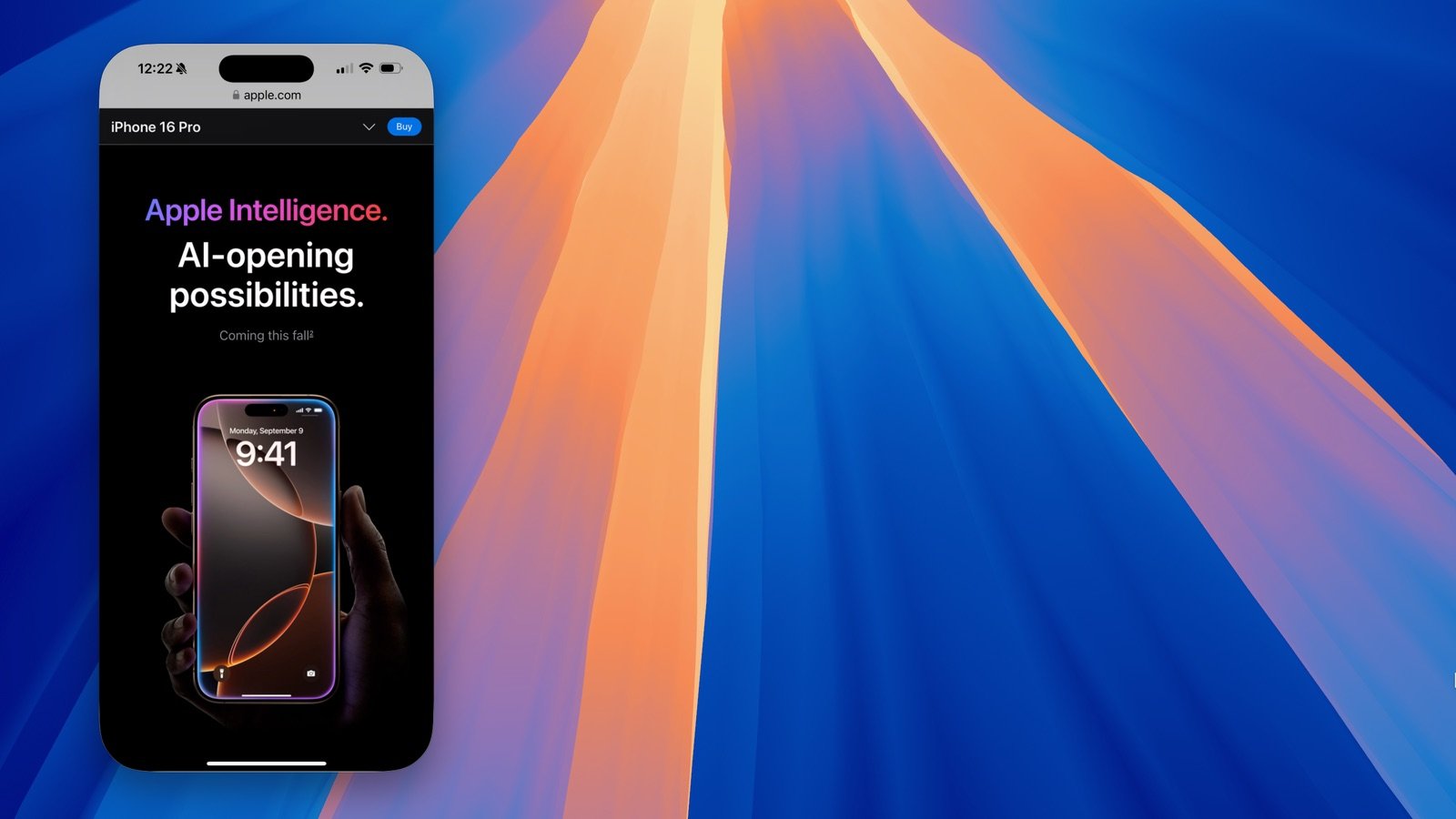
When Apple presented the new iPhone Mirroring feature as part of macOS Sequoia, it seemed like a gimmick. Who would need to access their nearby iPhone’s apps on their Mac? It turns out that it’s actually quite practical and easy to use; we’ll discuss some potential use cases for this feature.
Here’s how to set up and use iPhone Mirroring with macOS Sequoia, and why you should try it out.
What is iPhone Mirroring?
iPhone Mirroring is a way of displaying your iPhone screen on your Mac. It’s quite simple, though the technology behind it certainly isn’t. The two devices connect securely, through an encrypted connection based on Apple’s Continuity technology.
Your Mac shows what’s on your iPhone: its Home Screen and its apps. Then you can interact with those apps using your keyboard, mouse, or trackpad, to perform almost all the activities you do on the iPhone. You can open apps, click where you normally tap, view content, type, send messages, make phone calls, and more. The only thing I can think of that you can’t do is shake the iPhone to undo an action.
Note that Apple has not yet made iPhone Mirroring available in the EU due to “uncertainties” about the Digital Markets Act (DMA). If you live in a European Union country, you may have to wait a while before the feature becomes available.
How to set up iPhone Mirroring
To use iPhone Mirroring, you need a Mac with Apple silicon or with the Apple T2 Security Chip running macOS Sequoia 15, and an iPhone running iOS 18. Most Macs from 2018 or later have a T2 or an M1/M2/M3/M4 chip and can run macOS Sequoia.
To set up iPhone Mirroring, launch the iPhone Mirroring app, which you’ll find in the Dock by default on macOS Sequoia. A screen explains what iPhone Mirroring allows you to do.
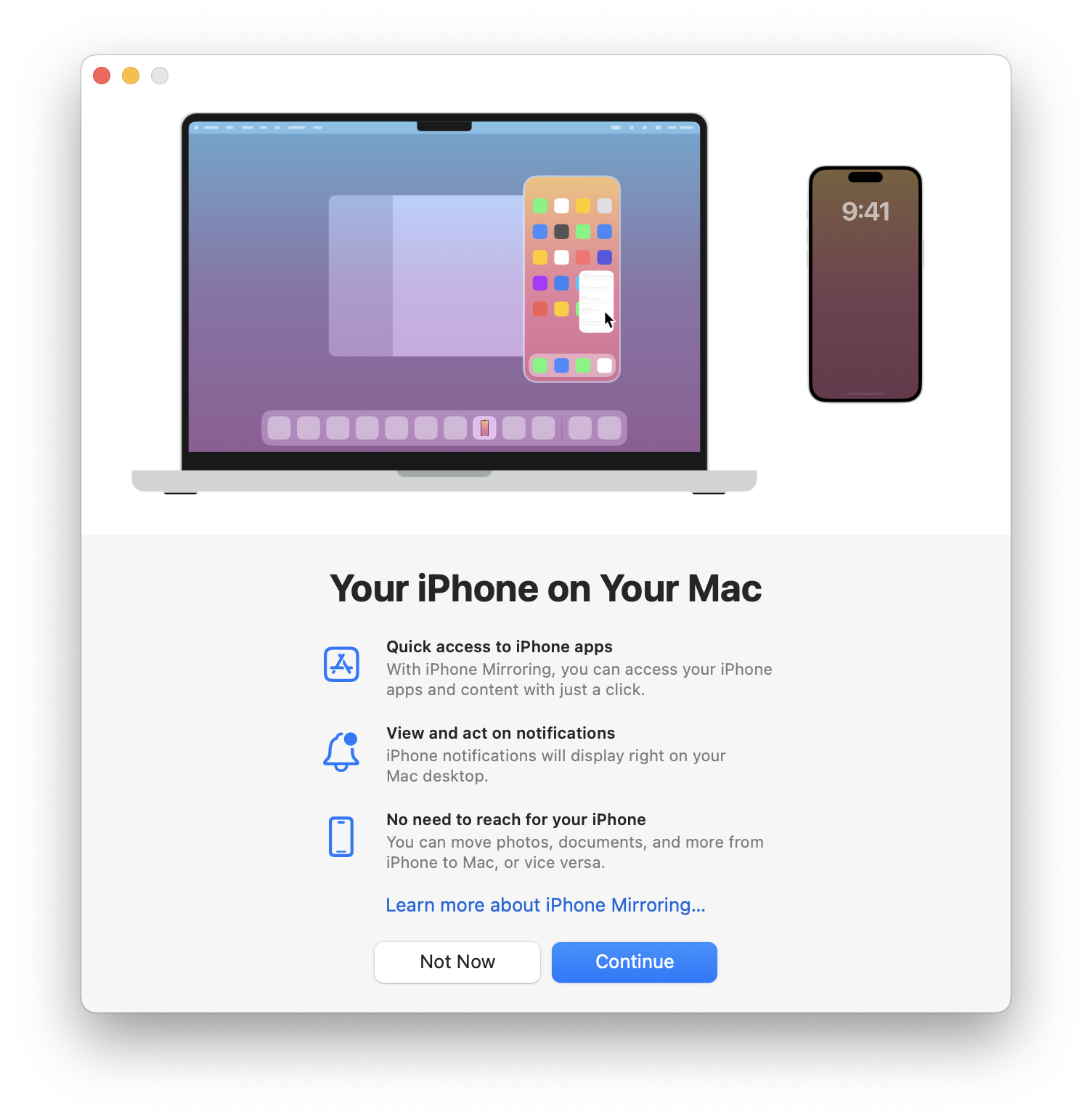
Click Continue, and the next screen tells you to unlock your iPhone. You’ll need to enter your passcode on the phone; using Face ID or Touch ID isn’t sufficient.
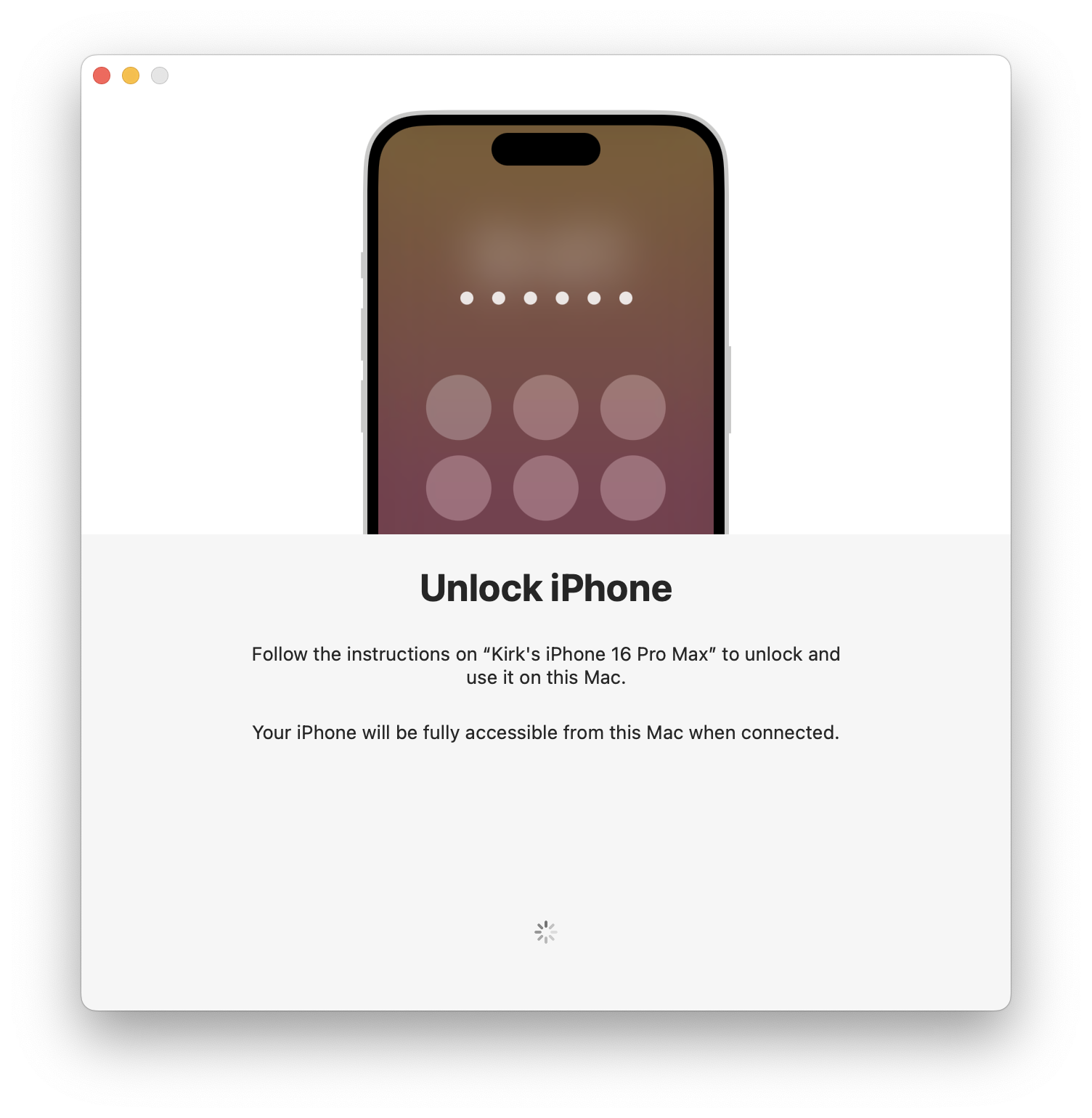
The next screen asks if you want to allow notifications from your iPhone to display on your Mac. I recommend that you allow this, because this is where iPhone Mirroring is really useful.

On the next screen, click Get Started, and you’ll see an iPhone-shaped image on your desktop, asking you to authenticate on your Mac, with Touch ID or by entering your password.
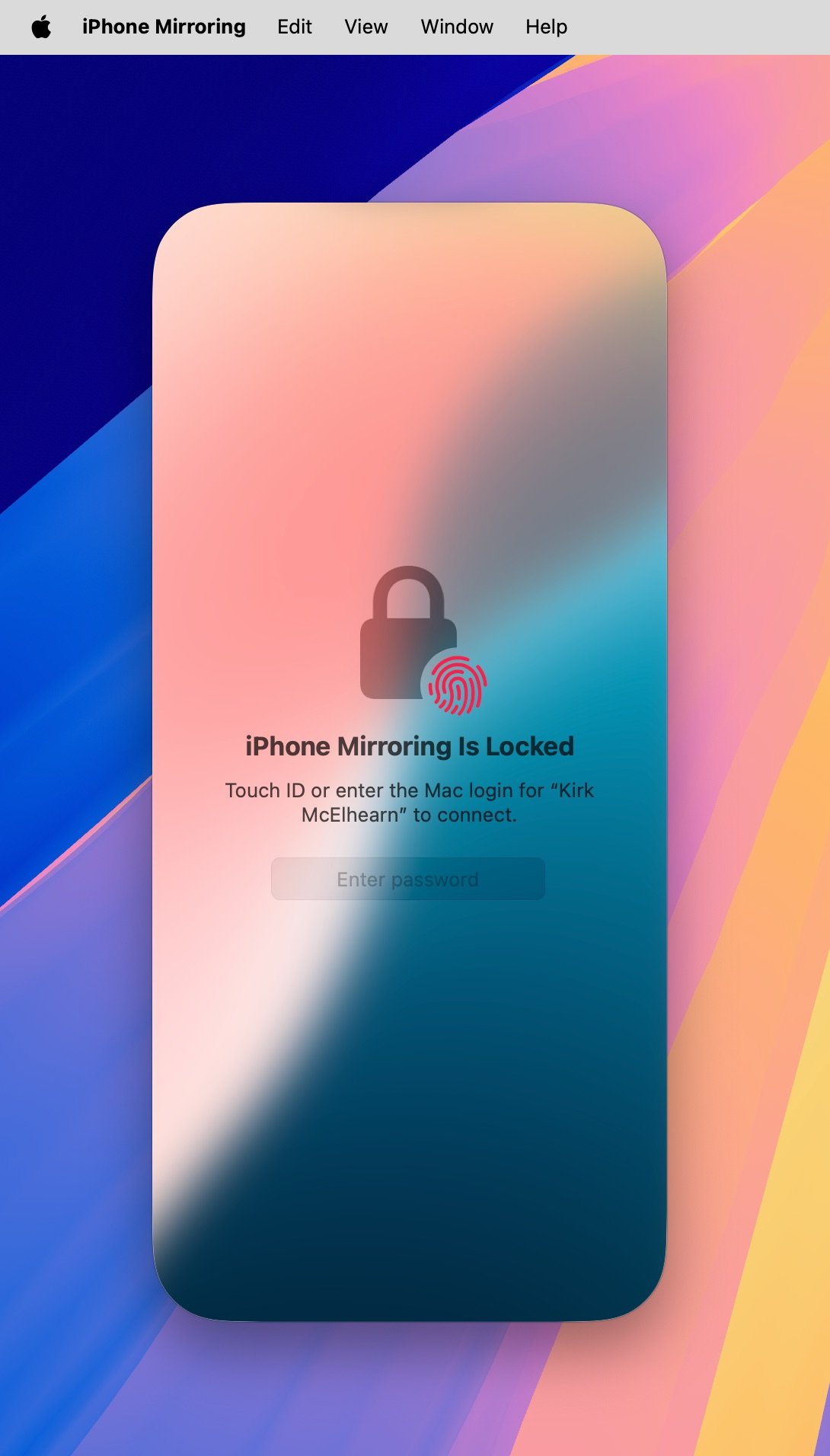
After you’ve done this, you’ll see your iPhone’s screen on your desktop.
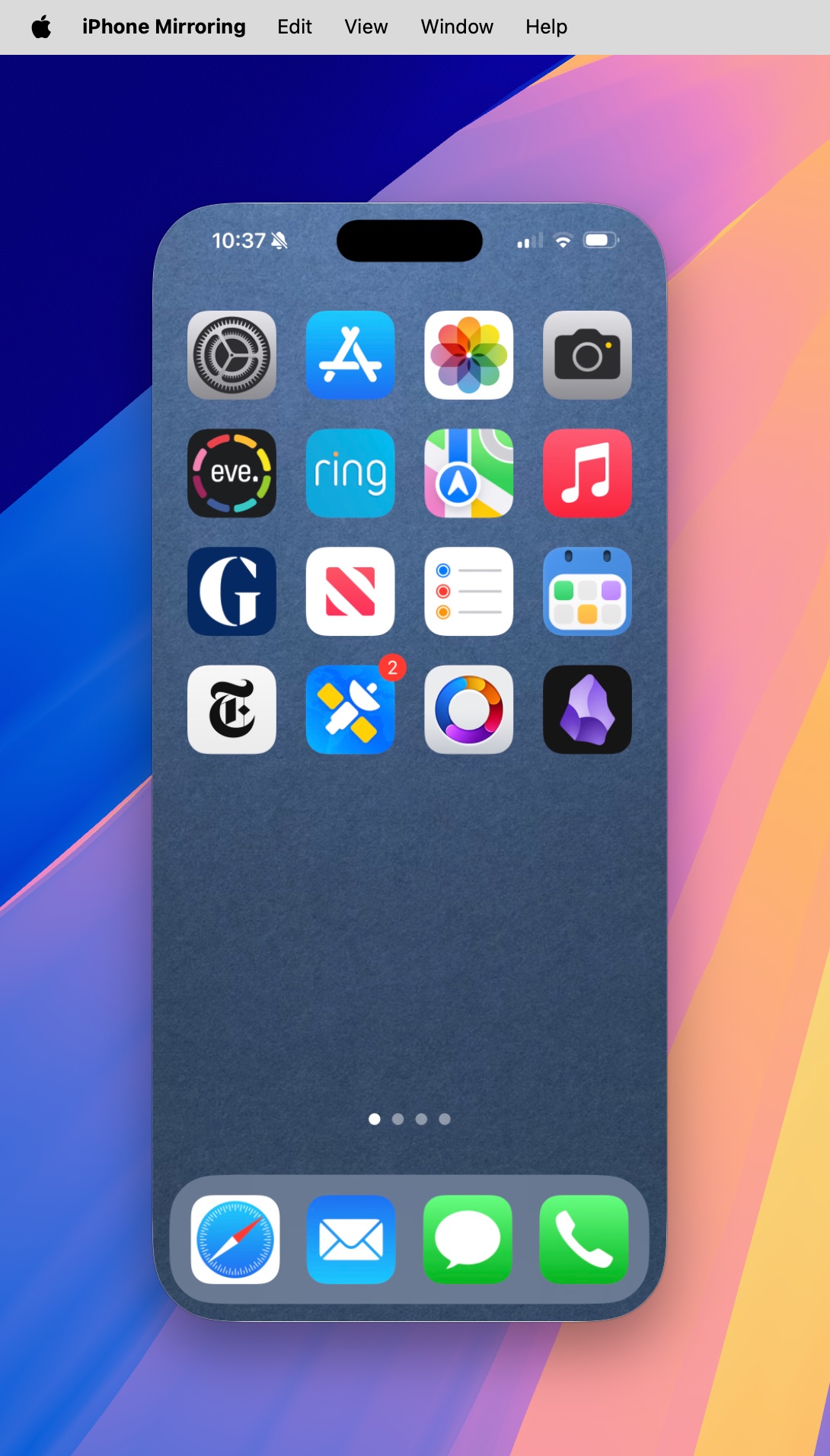
When your iPhone is being mirrored, a banner notification displays on the iPhone saying so. And if you want to stop mirroring, just unlock your iPhone or quit the iPhone Mirroring app.
How to use iPhone Mirroring
You use your iPhone on a Mac pretty much the way you use it in your hand, the only difference is that a cursor replaces your finger. Click apps to open them, and you can then type in text fields, browser address bars, and search fields, just as you would in any Mac app. From a home screen, you can swipe or click-and-drag to see another home screen and access other apps.
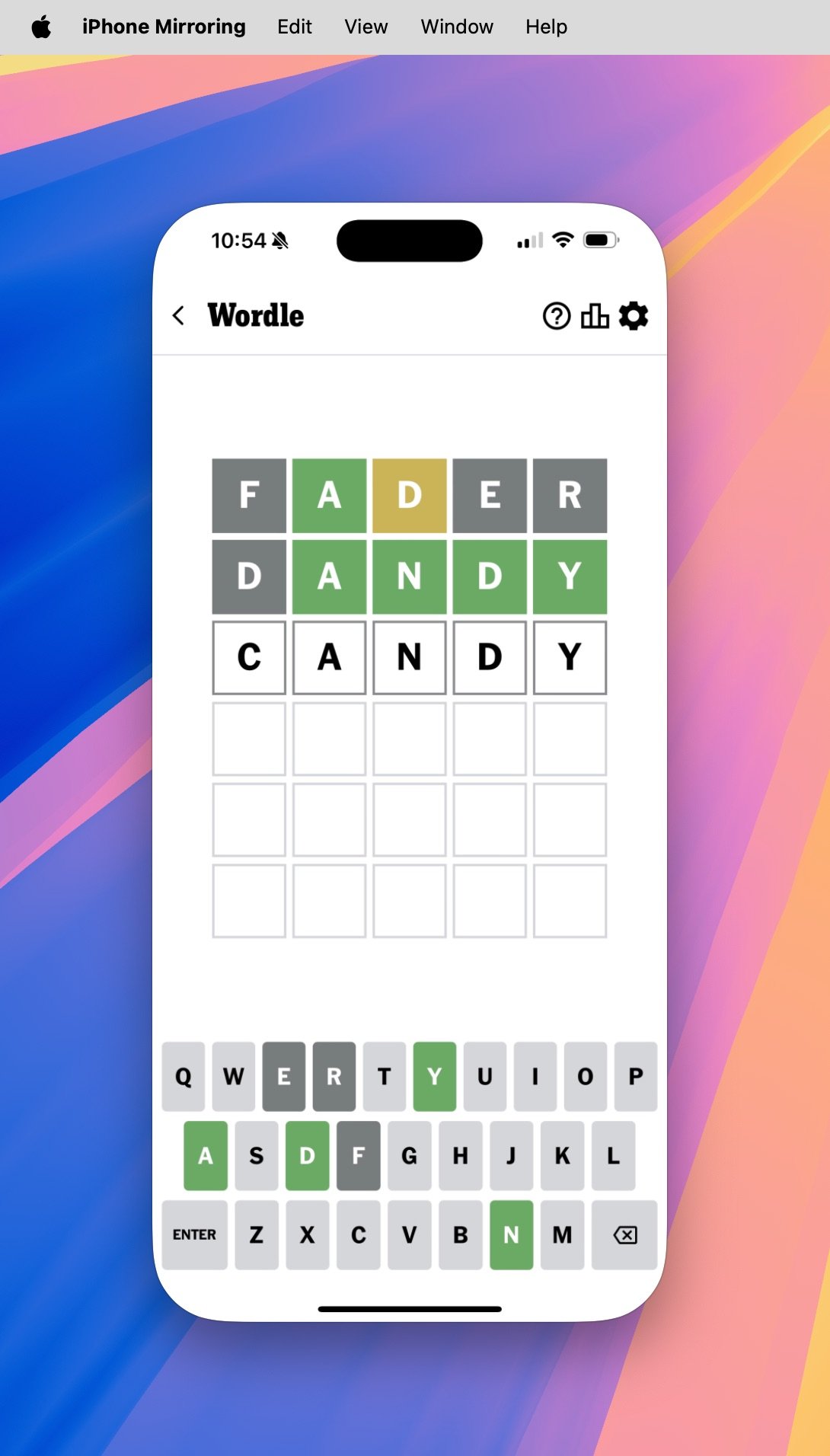
To switch back to the Home Screen, click the bar at the bottom of the iPhone Mirroring window.
There are three useful keyboard shortcuts you should learn:
- Command–1 takes you from the currently active app back to the home screen.
- Command–2 brings up the app switcher. You can swipe to scroll through active apps horizontally.
- Command–3 invokes Spotlight, so you can search on your iPhone. You can also bring up Spotlight by swiping down with your mouse or trackpad when on a home screen.
If you move your cursor over the top of the iPhone Mirroring window, a border displays around that window. The toolbar above the window lets you interact with your iPhone using your mouse or trackpad. The two buttons on the right bring up the home screen (left) and app switcher (right).
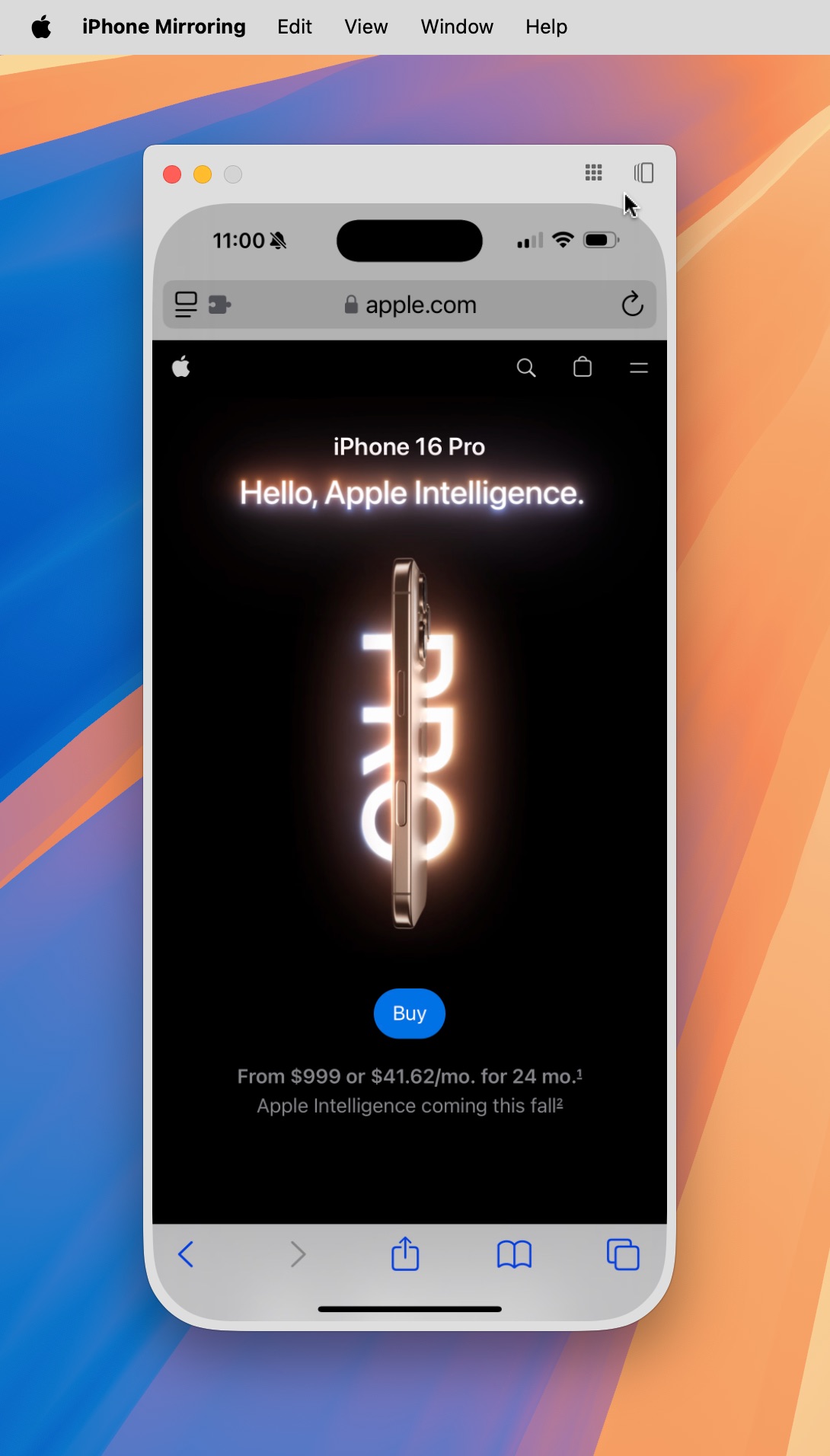
To change the size of your iPhone’s display on your Mac, click the View menu in the iPhone Mirroring app, or press Command-+ to increase its size, Command– to make it smaller, or Command–0 to make your iPhone’s display its normal size.
For now, as of the initial release of macOS Sequoia, you can copy items to and from your iPhone using the Universal Clipboard; just copy something on your Mac and then paste it on your iPhone, or vice versa.
You can also AirDrop, and even drag and drop, items between your Mac and your iPhone.
iPhone notifications on your Mac: the “killer feature”
One of the most useful feature features of iPhone Mirroring is the ability to display iPhone notifications on your Mac. This is practical because you won’t miss any notifications on your iPhone, even if it’s in silent mode.
You saw above that your Mac asks if you want to enable this when you first set up iPhone Mirroring. You can change this setting on your Mac in Settings > Notifications > Allow notifications from iPhone.
Notifications display on your Mac at the top right, just as Mac notifications do. If you click a notification, it opens the app in the iPhone Mirroring app. If you swipe to dismiss a notification, it dismisses on the iPhone.
For more on this, see Apple’s support article, Manage iPhone notifications on Mac.
iPhone Mirroring settings
You can choose, in iPhone Mirroring > Settings, to have your Mac require authentication each time you want to mirror your iPhone or to have it authenticate automatically. And you can click Reset iPhone Access if you want to prevent your Mac from connecting to your iPhone.
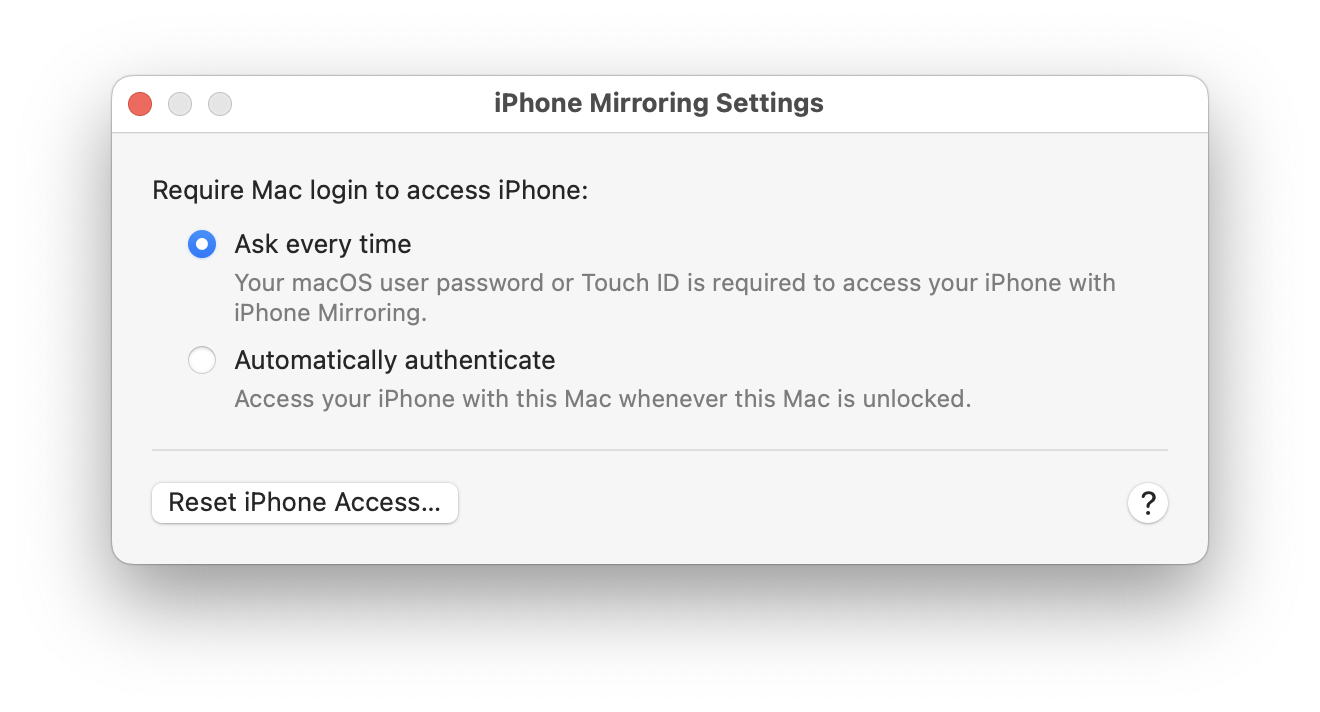
iPhone Mirroring is a great tool that allows you not to miss anything important when you’re working on your Mac, and to access apps that you only have on your iPhone. You may find it practical to set this feature up to automatically connect to your iPhone when you’re working on your Mac.
How can I learn more?
 Each week on the Intego Mac Podcast, Intego’s Mac security experts discuss the latest Apple news, including security and privacy stories, and offer practical advice on getting the most out of your Apple devices. Be sure to follow the podcast to make sure you don’t miss any episodes.
Each week on the Intego Mac Podcast, Intego’s Mac security experts discuss the latest Apple news, including security and privacy stories, and offer practical advice on getting the most out of your Apple devices. Be sure to follow the podcast to make sure you don’t miss any episodes.
You can also subscribe to our e-mail newsletter and keep an eye here on The Mac Security Blog for the latest Apple security and privacy news. And don’t forget to follow Intego on your favorite social media channels: ![]()
![]()
![]()
![]()
![]()
![]()
![]()